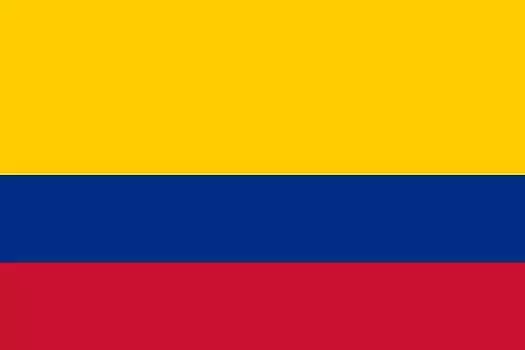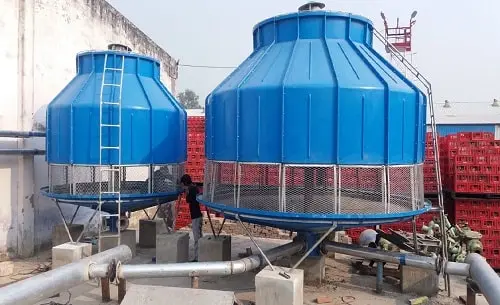Platinum is a smooth, hefty, and valuable metal with a white hue. Among the least known reactive metals is platinum. It is regarded as a noble metal because of its exceptional corrosion resistance, even at high temperatures. As a result, native platinum is frequently discovered chemically uncombined. Pre-Columbian South American people used it to create objects since it naturally exists in the alluvial sands of numerous rivers. It was mentioned in European publications in the sixteenth century, but scientists didn’t start looking into it until Antonio de Ulloa released a report on a novel metal with Colombian origins in 1748.
Since 2015, pure platinum has consistently cost less than pure gold, but it has previously cost twice as much or more. Early in 2021, the price of platinum per troy ounce varied between US$1,055 and US$1,320. Platinum is notably utilized in jewelry as well as is most frequently found in catalytic converters used for cars. 7.33 million ounces of platinum were demanded globally in 2020. Due to the strong demand, platinum production is crucial to supplying the market. 180 metric tonnes of platinum are anticipated to be produced worldwide.
Top Countries for Platinum Production In World
With that, let’s take a thorough look at the top 10 platinum-producing countries in the world –
1. South Africa
The largest producer of platinum is South Africa, which produces over double as much as all other nations combined. In 2019 South Africa produced 130,000 kg of platinum. The Upper Group, the Merensky Reef 2 (UG2) Reef, and the Platreef are the three principal platinum-bearing regions in South Africa. From 1925 to the end of the 20th century, platinum was first mined from the Merensky Reef, one of the main sources of metal. The UG2 Reef became South Africa’s main source of platinum after it opened in the 1970s, accounting for the vast majority of the metal extracted there. The Platreef, the 3rd biggest platinum mine in the nation, was not extensively mined until 1993. However, the country’s mining industry has suffered in recent years as a result of protests, labor strikes, safety concerns, and controversy involving mining companies.
2. Russia
Russia is the world’s second-largest producer of platinum, with a total output equal to every other nation. In the year 2019, Russia produced 22,000 kg of platinum. In the Ural Mountains of Russia, platinum was first found in 1823, and mining has continued ever since. Although cooper-nickel resources containing platinum were discovered in the Taimyr Peninsula of Siberia in 1935, platinum production from the Urals had already started to fall by the 1920s. Since then, several mines have come and gone in the area, but this one is still crucial for Russia’s platinum deposits.
3. Zimbabwe
The third-largest producer of platinum worldwide is Zimbabwe with a production of 15,000 kg in the year 2019. The Great Dyke, a geological formation that extends through the middle of Zimbabwe, is home to three significant platinum mines. The oldest platinum mine in the nation, these mines are indeed the Mimosa operation located in the southern portion of the Great Dyke. They began short in the 1920s and have been in operation continuously since 1994. The Unki mine was put into operation in 2010, whereas the Zimplants mine began operations in the early 1990s.
4. Canada
The world’s fourth-largest producer of platinum is Canada with a production of 7,400 kg of platinum in the year 2019. Canada’s Ontario province is where platinum was first found in 1888. The Sudbury Basin located in Central Ontario provides most of the platinum used in Canada. The Raglan nickel mines of Manitoba, and the Lac des lles mines of Western Ontario and Quebec provide the majority of Canada’s remaining platinum. In 2020, PGMs from Canadian mines were exported in roughly 1 million troy ounces. Ontario accounted for 77.1% of production, with the remaining production coming from Québec (22.0%), Manitoba (0.8%), along with Newfoundland and Labrador (0.11%). The only PGM mine in Canada is in western Ontario, close to Thunder Bay. However, most Canadian nickel mines also recover PGMs as a byproduct.
5. The United States
Despite having just one mining business that mines platinum, the U.S. is the world’s fifth-largest producer of metal. The amount of platinum produced in the United States has been consistent over the previous ten years; in 2010, output was 3,450 kilograms, and by 2020, it had reached a peak of 4,200 kilograms. In 2020, the United States produced platinum worth 120 million dollars. America’s sole producer of platinum is The Stillwater Mining Company. Platinum is obtained from two mines in this country. These two mines are the East Boulder Mines, which is located near Big Timber, Montana, and the Stillwater Mines, which is in Nye, Montana.
6. China
On spot number 5 we have China as one of the largest producers of Platinum. In 2017 China produced 2,500 kilograms of platinum. In 2021, China’s overall gross platinum demand increased from the 2.2 million ounces it had the year before to roughly 2.4 million ounces. Since 2013, there have been annual fluctuations in the total demand for overall platinum in China. The country’s platinum demand is anticipated to be around 2.07 million ounces in 2022. Due to tougher emission requirements, China may be adding more platinum to the catalytic converters of large trucks. To reduce harmful emissions, car exhausts employ about 40% platinum. It is also commonly used in jewelry.
7. Finland
Between 1998 and 2020, Finland’s average platinum production was 764 kilos, ranging from 265 kilograms in 2009 to 1576 kilograms in 2018. 1277 kilos is the most recent figure from 2020. Based on data from 11 nations, the 2020 global average is around 15047 kg. Because of its substantial metal endowments, Finland is a prominent mining jurisdiction in Europe. With Suhanko, Finland could overtake Russia as the EU’s top palladium and platinum producer. The bedrock of Finland still offers the possibility of discovering numerous essential minerals. The geology is suitable, and mining has a long history in Finland. Finland currently has a focus on mining for industrial minerals, basic metals, diamonds, platinum group metals, and gold. The majority of exploration businesses in Finland focus their primary or secondary searches on finding gold.
8. Colombia
Columbia acquires the 8th spot on our list of top countries for its platinum production. Between 1998 and 2020, Colombia’s average production of platinum was 832 kilograms, ranging from 163 kilograms in 2019 to 1460 kilograms in 2012. The most recent figure is 410 kilos from 2020. The Andean highlands in Colombia are a rich source of numerous minerals and metals. All along seaward flanks situated in the western cordillera, platinum is discovered in association with ultrabasic rocks including pyroxenes, peridotites, and dunites. Alluvial deposits of gravel and platiniferous sands are produced as a result of the weathering of these minerals and river movement. The Chocó region located in Pacific Colombia is the most significant area where these resources are exploited, with smaller areas also present in the state of Esmeraldas in north-coastal Ecuador and near the Tumaco district located in the Narino department in south-coastal Colombia.
9. Australia
On the 9th spot, we have Australia as one of the largest producers of platinum in the world. Australia produced the same quantity of platinum through mining in 2021—0.1 metric tonnes. In the past, platinum production has varied around 0.2 and 0.1 mt. The six metals that constitute the platinum group—ruthenium, rhodium, palladium, osmium, and iridium—have all been recovered from Australian soil in the past, but they were often byproducts of miners who were primarily interested in the nickel and copper that are frequently present with PGEs.
10. Poland
At the 10th spot, we have Poland. Poland’s average platinum production between 1998 and 2012 was 22 kilos, with a bare minimum of 20 kilograms in 1998 and a peak of 25 kilograms in 2009. The most recent figure is 25 kilos, from 2012. Gold, silver, platinum, and other platinum group metals are included in the category of precious metals. Poland has become more important as a producer of rare metals, especially after the recently built Precious Metals Plant attained its full capacity. However, compared to Polish output and global trends, consumption of such metals is still quite low, for example, for the creation of jewelry items (silver and gold), for use in photography (silver), and automobiles (platinum and palladium).
Conclusion
The ancient Egyptian casket from the 7th century BC that was discovered in Thebes and presented to Queen Shapenapit is most likely the earliest example of platinum that has been worked. Jewelry is frequently made of platinum. However, catalytic converters for vehicles, trucks, and buses are where it is primarily used. Each year, this meets around 50% of the need. The conversion of engine emissions into less dangerous waste products is made possible by platinum.
Platinum Production FAQs
Q1. How Is Platinum Processed And Refined Into A Usable Form?
Ans: The initial step involves extracting the platinum ore from the earth, followed by crushing and milling to generate a fine powder. This powder is then subjected to froth flotation, a process in which water and different chemicals help separate valuable minerals, including platinum group metals (PGMs), from waste materials. After obtaining the PGM concentrate, it is smelted, which involves heating the concentrate to high temperatures. The final stage of refining platinum requires dissolving it in Aquaregia and subsequently precipitating it as pure platinum powder.
Q2. What Are The Environmental Impacts Of Platinum Mining And Production?
Ans: The environmental impacts associated with platinum mining and production are significant and include greenhouse gas emissions, deforestation, and water pollution. The extraction process often causes habitat destruction and biodiversity loss, as vast areas of land are cleared to accommodate mining operations. Additionally, water pollution can occur when chemicals used during processing and refining stages, such as cyanide and sulfuric acid, contaminate nearby water sources.
Q3. How Has The Covid-19 Pandemic Impacted The Platinum Industry?
Ans: As the Covid-19 pandemic spread globally, it resulted in lockdowns, travel restrictions, and disruptions to international supply chains. Consequently, mining operations faced temporary shutdowns, and platinum demand in industries like automotive and jewelry plummeted. These factors led to fluctuations in platinum prices and overall production levels.
Q4. What Are Some Of The Key Characteristics Of Platinum That Make It Valuable And Sought After?
Ans: Platinum’s unique characteristics, such as its rarity, durability, and corrosion resistance, make it valuable and highly sought after. As one of the rarest metals on earth, platinum holds a higher value than gold and silver. Its durability makes it an ideal material for various industrial applications, as it can endure high temperatures and harsh chemical environments.
























